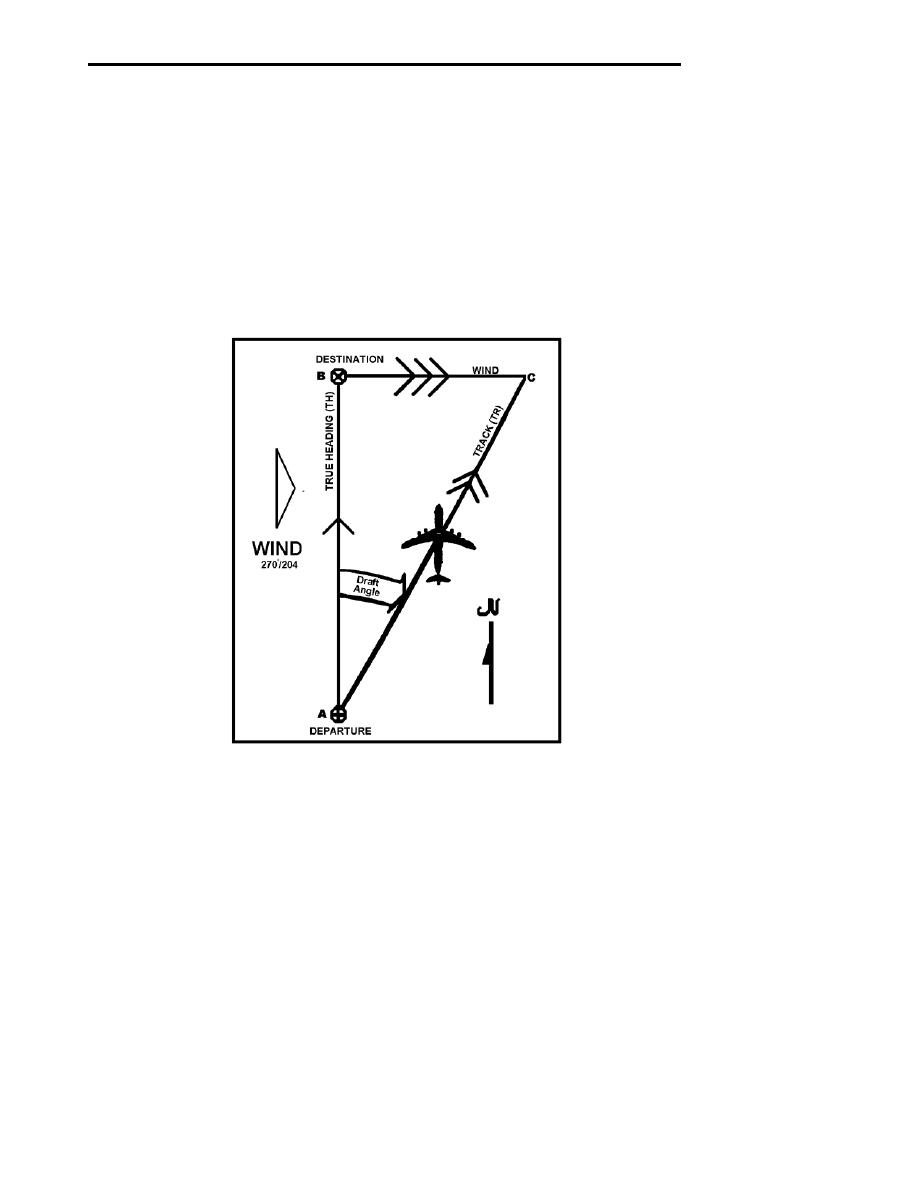 |
|||
|
|
|||
|
Page Title:
Figure 3-1 Relationship Between Wind and Aircraft Heading |
|
||
| ||||||||||
|
|  CHAPTER THREE
INSTRUMENTS FLIGHT PLANNING
302.
WIND TRIANGLE
If this were an ideal world in which to fly, there would be no wind. Set the aircraft to fly a track
and the aircraft would not deviate. The same would be said for airspeed. TAS and GS would be
one and the same. This is not the case as you have found out. There is one element that changes
all of this wind.
One of the most important tasks an NFO performs is determining what the wind is, where it is
coming from and how fast. If an aircraft flies a constant heading and has any wind acting on it,
its actual path over the ground or track is different from the aircraft's heading.
The relationship between wind and aircraft heading/TAS is illustrated by the wind triangle in
Figure 3-1.
Figure 3-1 Relationship Between Wind and Aircraft Heading
The wind vector causes the aircraft to drift from its intended course. Additionally, the wind
vector causes GS to be either less or greater than TAS (Figure 3-2).
3-2 SITUATIONAL AWARENESS
|
|
Privacy Statement - Press Release - Copyright Information. - Contact Us |